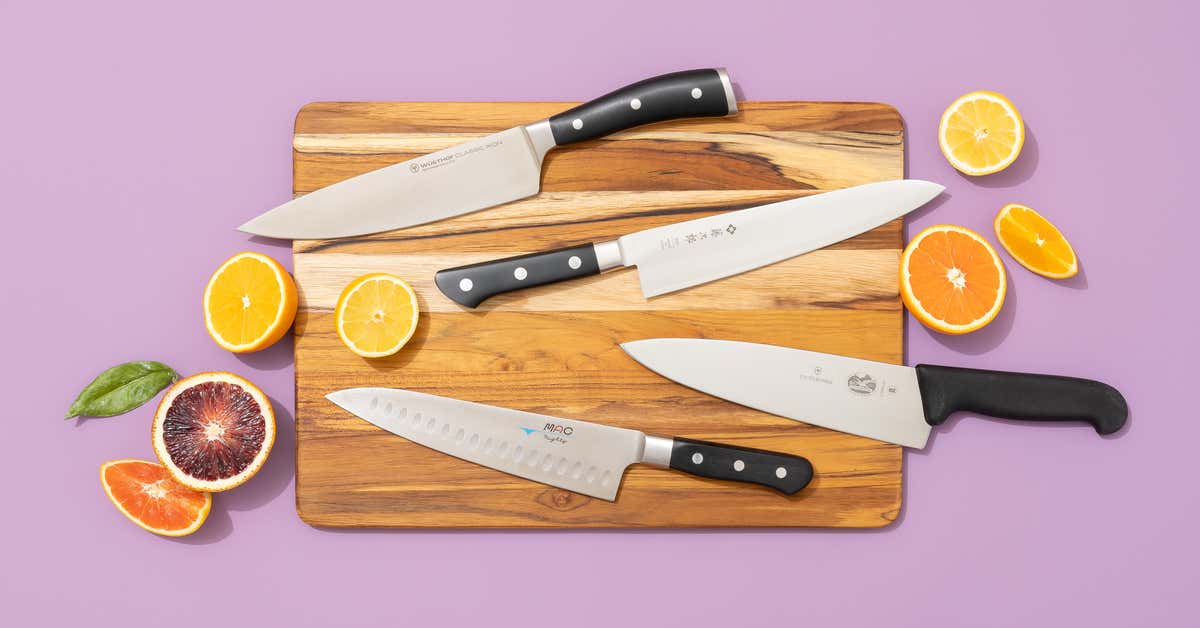Kitchen Knives – A Simple Guide to Picking the Right One

A sharp knife is without a doubt the most important culinary item in your kitchen. It is the only tool in your arsenal that can do everything from finely slicing herbs to cutting up an entire chicken. However, purchasing the right kitchen knife is no walk in the park, especially if it’s your first time. Rather than getting hung up on a knife that is sharp, consider other factors like ergonomics, feel, and construction as these elements will determine how easy it will be to use and how it will hold up over time.
That being said, let’s delve into picking the right kitchen knives for your needs.
Pick the Right Knife for Your Hands
While the sharpness and feel are vital, the right kitchen knife boils down to your preference. Find one that feels comfortable in your hand. So, an ideal knife should have a nice curve on the blade, ideal balance and a decent sized, non-slip and comfortable handle. The knife should feel good the moment you put it in your hand. It needs to be an extension of your arm and not just a kitchen tool.
Common Types of Kitchen Knives
Cooks’ knives may get a lot done, but some are designed for specific tasks such as carving, filleting and paring. If you need these, then it’s wise to invest in a set as this is often cheaper and more convenient than getting them separately. Some of the common types of knives include:
Paring knife- handy for trimming and peeling potatoes, fruits and other vegetables.
Carving knife- features a long blade ideal for slicing wider joints like cooked ham.
Filleting knife- often used for butterflying meats, removing fish skin and precise work with raw meat or chicken.
Chef’s knife- the most versatile knife, used to handle a wide array of foods and textures.
Breading knife- has a serrated edge used for cutting through bread.
The Materials
The common materials used to make kitchen knives include:
(i) Stainless Steel
This is the most common material in kitchen knives. It is easy to sharpen and does not rust easily. Unfortunately, it is susceptible to bending, flexing and going blunt relatively fast. That’s because stainless steel is a softer metal compared to its counterparts.
(ii) Carbon Steel
This is the traditional material used to make kitchen knives as it remains sharp for an extended period. However, it is prone to rust, but seasoning it with mineral oil helps prevent this. Also, carbon steel knives call for more care and maintenance compared to the stainless steel types. If you are serious about cooking and aren’t on a budget, then carbon steel is the best option.
(iii) Damascus Steel
These knives feature a stainless steel exterior and a carbon steel core. They are often handmade and therefore quite expensive.
(iv) Ceramic
Knives made from ceramic are sharp, lightweight and affordable. They rarely need sharpening and do not rust. However, they chip easily and are quite hard to maintain at home. That’s because ceramic requires a diamond sharpener, and so, you may have to send it back to the supplier for this, which is a hassle.
The Weight
When it comes to weight in kitchen knives, it all boils down to personal preference. However, most experts argue that a cook’s knife, for instance, needs to have some weight behind it. At the same time, you don’t want to pick a knife that is so heavy it strains your wrists.
Balance
The knife’s weight should be equally balanced between the blade and the handle. You can assess this by laying the knife across the forefinger and middle finger where the blade and handle meet. If it tips one way or the other, then it’s not balanced. You don’t want a handle that’s too heavy as it will not cut as effectively. Similarly, you do not want a blade that is too heavy, as it will be uncomfortable to use.
The Comfort
When purchasing a kitchen knife, you need to ensure the handle does not have sharp or angular edges that will create pressure points in your hand. Whether you pick a knife with a rubberised handle for more grip, a moulded one to fit the contour of your hand, or a combination of the two, ensure that it is comfortable to hold and use.